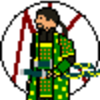Sign In
CloseShortly after the Japanese defeat in World War II, both the nationalist Kuomintang and Communist Party armies began gearing up to restart their civil war in 1946. But as the Soviet Union’s support for the communist forces began to change the tide of the conflict, the Republic of China called out for support, which came in the return of the Flying Tigers. Formed by the original pilots of the American Volunteer Group during the Sino-Japanese War, and bolstered by massive numbers of battle-hardened pilots from across the Pacific, the Tigers’ squadrons dwarfed its pre-war predecessors' numbers.
Delays in logistics & diplomacy did not bring the Flying Tigers into the war until 1948, unable to prevent the taking of most of northern China, but were able to counter the communist Huaihai Campaign and allowed Kuomintang soldiers to escape & regroup. Afterwards, the Tigers and their Chinese allies began an aggressive campaign to wear down PLA forces and give their own ground armies time to build up a defensive line that finally halted the Communist Party’s southern march. By the initial end of the war in 1950, the final line was drawn between the coastal city of Hangzhou and the border of Tibet, a nation that also retained its independence with the help of the AVG.
In the current 1950s, the line remains between the northern People’s Republic of China (with Beijing as its capital) and the southern Republic of China (its capital being Hong Kong). The Flying Tigers, now a private military contractor, continues to serve under permanent contract to the ROC as trainers for their air forces, and often supports in patrolling the front against enemy aircraft, mostly near the major cities of Chengdu, Wuhan, & Hangzhou. Tibet also received the Tigers’ help in modernizing its air force and assisting in protecting its northern borders from communist forces, sometimes getting into skirmishes in the mountains. The Tigers also served contracts for missions over French Indochina & the Korean Peninsula.
The F4U Corsairs served as the primary fighter in their entry into the Chinese Civil War, at first flown exclusively by former US Navy & Marine pilots until the rest of the AVG have completed training with them. They proved the most critical in keeping Nationalist Chinese forces from falling, and made the most air-to-air victories in Flying Tiger service. They were eventually replaced by newer jets in mass export.
Submission Information
- Views:
- 459
- Comments:
- 0
- Favorites:
- 1
- Rating:
- General
- Category:
- Visual / Digital




